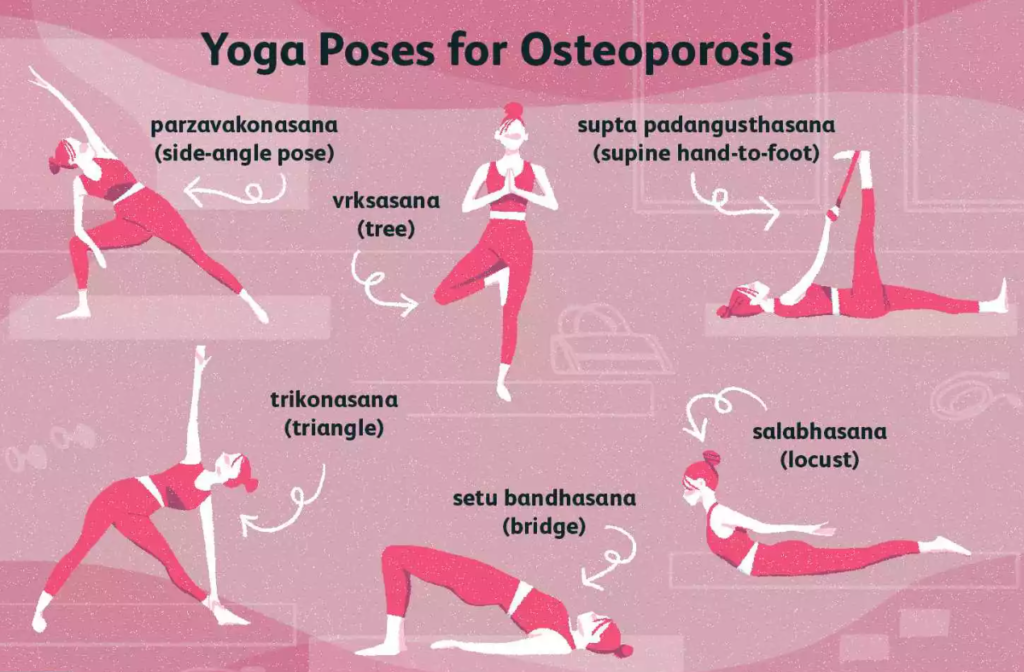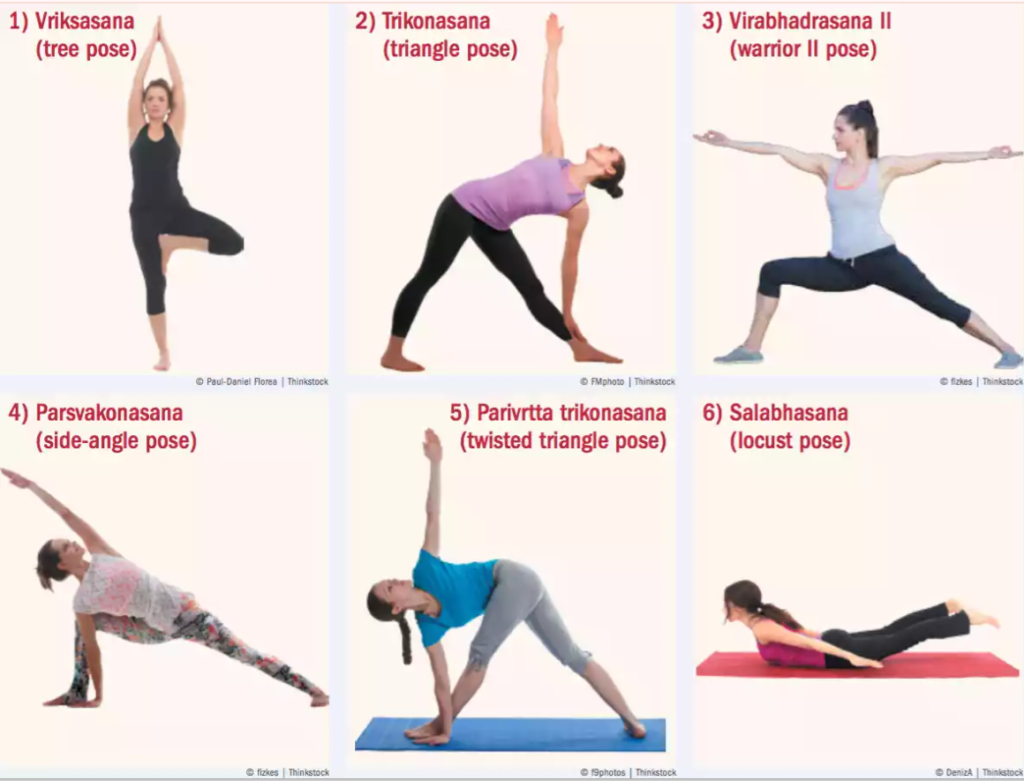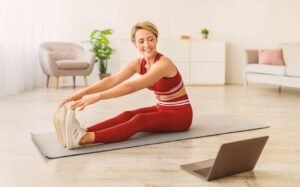Table of Contents
ToggleWhat is Osteoporosis?
Osteoporosis, derived from the Greek words “osteo” (bone) and “poros” (pore), is a condition characterized by weakened bones that are more susceptible to fractures. This condition primarily affects older adults, particularly postmenopausal women, due to the decrease in estrogen levels which plays a crucial role in bone density maintenance. Historically, osteoporosis has been a silent disease, often going undetected until a fracture occurs. The bones most commonly affected are the hips, spine, and wrists.
Symptoms and Diagnosis
Osteoporosis is often called a “silent disease” because it progresses without symptoms until a fracture occurs. Common symptoms include:
– Back pain, caused by a fractured or collapsed vertebra
– Loss of height over time
– A stooped posture
– Bone fractures that occur much more easily than expected
Diagnosis typically involves bone density tests, such as a DEXA scan, which measures bone mineral density (BMD). This test helps in assessing the risk of fractures and the severity of bone loss.
Historical Context
The understanding of osteoporosis has evolved significantly over the centuries. In ancient times, bone fragility was often attributed to aging without a clear understanding of the underlying causes. It wasn’t until the 19th century that the medical community began to recognize osteoporosis as a distinct condition. Advances in medical imaging and bone density measurement in the 20th century have furthered our understanding and ability to diagnose and treat this condition effectively.
How Yoga Can Help with Osteoporosis
Yoga, an ancient practice with roots in India, has been recognized for its numerous health benefits, including its potential to improve bone health. The practice of yoga involves a combination of physical postures, breathing exercises, and meditation, which collectively contribute to overall well-being.
Benefits of Yoga for Osteoporosis
1. Improved Bone Density: Weight-bearing poses in yoga can stimulate bone growth and help maintain bone density. Poses such as Warrior I and II, Tree Pose, and Triangle Pose are particularly beneficial.
2. Enhanced Balance and Coordination: Yoga improves balance and coordination, reducing the risk of falls, which is crucial for individuals with osteoporosis.
3. Increased Flexibility and Strength: Regular practice of yoga enhances muscle strength and flexibility, providing better support for the bones and reducing the risk of fractures.
4. Stress Reduction: Yoga’s emphasis on mindfulness and relaxation helps in reducing stress, which can have a positive impact on overall bone health.
Scientific Evidence
Research has shown that yoga can be beneficial for individuals with osteoporosis. A study published in the journal “Topics in Geriatric Rehabilitation” found that practicing yoga for 12 minutes daily improved bone density in the spine and femur. Another study in “Osteoporosis International” highlighted that yoga poses, when practiced with proper alignment and modifications, can be safe and effective for improving bone health.
Yoga Poses to Avoid with Osteoporosis
While yoga offers numerous benefits, certain poses can be detrimental to individuals with osteoporosis. It’s essential to be aware of these poses to prevent injury and ensure a safe practice.
Forward Bends
Forward bends, such as Standing Forward Bend (Uttanasana) and Seated Forward Bend (Paschimottanasana), can increase the risk of vertebral fractures. These poses involve spinal flexion, which can put excessive pressure on the vertebrae, leading to compression fractures.
Deep Twists
Deep twisting poses, like Revolved Triangle Pose (Parivrtta Trikonasana) and Marichyasana III, can cause spinal compression and should be avoided. Twisting the spine excessively can lead to fractures, especially in individuals with weakened bones.
High-Impact Poses
High-impact poses, such as Jumping into Plank Pose or Jumping Forward from Downward Dog, can increase the risk of falls and fractures. These poses involve sudden movements that can be dangerous for individuals with osteoporosis.
Inversions
Inversions, including Headstand (Sirsasana) and Shoulder Stand (Sarvangasana), pose a risk of loss of balance and falls. These poses require significant strength and balance, which can be challenging for individuals with osteoporosis.
Backbends
Deep backbends, such as Wheel Pose (Urdhva Dhanurasana) and Camel Pose (Ustrasana), can strain the spine and increase the risk of fractures. These poses involve hyperextension of the spine, which can be harmful to individuals with osteoporosis.
For more detailed information on yoga poses to avoid, you can refer to Saratoga Spine’s guide on osteoporosis and yoga positions to avoid.
Safe Yoga Practices for Osteoporosis
Practicing yoga safely with osteoporosis involves choosing appropriate poses, using modifications, and incorporating props to ensure stability and support.
Recommended Yoga Poses

Certain yoga poses are particularly beneficial for individuals with osteoporosis. These poses focus on building strength, improving balance, and enhancing flexibility without putting excessive strain on the bones.
Mountain Pose (Tadasana)
Mountain Pose is a foundational standing pose that helps improve posture and balance. It strengthens the legs and core, providing a stable base for other poses.
Warrior I and II (Virabhadrasana I and II)
Warrior poses are excellent for building strength in the legs and hips. They also improve balance and stability, which are crucial for preventing falls.
Tree Pose (Vrksasana)
Tree Pose is a balancing pose that strengthens the legs and improves coordination. It helps in enhancing focus and concentration, which can reduce the risk of falls.
Bridge Pose (Setu Bandhasana)
Bridge Pose strengthens the back, glutes, and hamstrings. It also opens the chest and shoulders, improving posture and reducing the risk of spinal fractures.
Cat-Cow Pose (Marjaryasana-Bitilasana)
Cat-Cow Pose is a gentle flow that improves spinal flexibility and strengthens the core. It helps in maintaining spinal health and reducing the risk of fractures.
For more safe yoga poses for osteoporosis, you can refer to Yoga Anytime’s guide on osteoporosis-safe yoga poses.
Modifications and Props for Safety
Using modifications and props can make yoga practice safer and more accessible for individuals with osteoporosis. Props such as blocks, straps, and bolsters provide support and stability, reducing the risk of injury.
Blocks
Blocks can be used to bring the floor closer in standing poses, providing support and stability. They are particularly useful in poses like Triangle Pose and Half Moon Pose.
Straps
Straps help in maintaining proper alignment and extending reach in poses. They are beneficial in poses like Seated Forward Bend and Reclining Hand-to-Big-Toe Pose.
Bolsters
Bolsters provide support and cushioning in restorative poses. They are useful in poses like Supported Bridge Pose and Reclining Bound Angle Pose.
Wall Support
Using a wall for support can enhance stability and balance in standing poses. It is particularly helpful in poses like Tree Pose and Warrior III.
Benefits of Yoga for Osteoporosis

Yoga offers numerous benefits for individuals with osteoporosis, contributing to overall bone health and well-being.
Improved Bone Health
Regular practice of yoga can help in maintaining and improving bone density. Weight-bearing poses stimulate bone growth and strengthen the skeletal system.
Scientific Evidence
Research has shown that yoga can be beneficial for bone health. A study published in “Topics in Geriatric Rehabilitation” found that practicing yoga for 12 minutes daily improved bone density in the spine and femur. Another study in “Osteoporosis International” highlighted that yoga poses, when practiced with proper alignment and modifications, can be safe and effective for improving bone health.
Historical Context
The practice of yoga for bone health has historical roots in ancient India. Traditional texts like the Hatha Yoga Pradipika and the Yoga Sutras of Patanjali emphasize the importance of physical postures (asanas) for overall health and well-being. Modern research has validated these ancient practices, highlighting their benefits for bone health.
Enhanced Balance and Flexibility
Yoga improves balance and flexibility, reducing the risk of falls and fractures. Poses that focus on balance and coordination help in enhancing stability and preventing injuries.
Balance Poses
Balance poses, such as Tree Pose and Warrior III, improve coordination and stability. These poses strengthen the legs and core, providing better support for the bones.
Flexibility Poses
Flexibility poses, such as Cat-Cow Pose and Downward Dog, enhance spinal flexibility and reduce stiffness. These poses help in maintaining spinal health and reducing the risk of fractures.
Scientific Evidence
Research has shown that yoga can improve balance and flexibility. A study published in the “Journal of Geriatric Physical Therapy” found that practicing yoga improved balance and reduced the risk of falls in older adults. Another study in “BMC Geriatrics” highlighted that yoga improved flexibility and mobility in individuals with osteoporosis.
Expert Tips for Practicing Yoga with Osteoporosis
Practicing yoga with osteoporosis requires careful consideration and expert guidance. Here are some tips to ensure a safe and effective practice.
Consulting with Healthcare Providers
Before starting a yoga practice, it is essential to consult with healthcare providers, including doctors and physical therapists. They can provide personalized recommendations and ensure that the practice is safe and suitable for individual needs.
Medical Clearance
Obtaining medical clearance is crucial, especially for individuals with severe osteoporosis or other medical conditions. Healthcare providers can assess the risk of fractures and recommend appropriate modifications.
Physical Therapy
Working with a physical therapist can provide additional support and guidance. Physical therapists can design a customized exercise program that includes safe yoga poses and modifications.
Listening to Your Body
Listening to your body is essential when practicing yoga with osteoporosis. It is important to be mindful of any discomfort or pain and avoid pushing beyond your limits.
Pain Management
If you experience pain during a pose, it is important to stop and reassess. Pain can be a sign of strain or injury, and it is crucial to avoid poses that cause discomfort.
Mindful Practice
Practicing yoga mindfully involves paying attention to your body’s signals and making adjustments as needed. It is important to move slowly and with control, avoiding sudden or jerky movements.
Common Misconceptions about Yoga and Osteoporosis
There are several misconceptions about yoga and osteoporosis that need to be addressed to ensure a safe and effective practice.
Yoga is Always Safe for Osteoporosis
One common misconception is that yoga is always safe for individuals with osteoporosis. While yoga offers numerous benefits, certain poses can be harmful and should be avoided.
Risk of Injury
Certain yoga poses, such as forward bends and deep twists, can increase the risk of fractures and should be avoided. It is important to practice with proper alignment and modifications to ensure safety.
Expert Guidance
Practicing yoga with osteoporosis requires expert guidance and supervision. Working with a qualified yoga instructor who has experience with osteoporosis can help in ensuring a safe and effective practice.
All Yoga Poses are Beneficial
Another misconception is that all yoga poses are beneficial for individuals with osteoporosis. While many poses offer benefits, some poses can be harmful and should be avoided.
Harmful Poses
Poses that involve spinal flexion, deep twists, and high-impact movements can be harmful to individuals with osteoporosis. It is important to avoid these poses and focus on safe and beneficial poses.
Customized Practice
A customized yoga practice that includes safe poses and modifications is essential for individuals with osteoporosis. Working with a qualified instructor can help in designing a practice that meets individual needs and ensures safety.
Relevant Data Table For Which Yoga Poses Are Bad For Osteoporosis:
| Yoga Pose | Reason to Avoid |
| Forward Bends | Can increase the risk of vertebral fractures |
| Deep Twists | May cause spinal compression |
| High-Impact Poses | Risk of falls and fractures |
| Inversions | Potential for loss of balance and falls |
| Backbends | Can strain the spine and increase fracture risk |
FAQs:
Can I practice yoga if I have osteoporosis?
Yes, you can practice yoga if you have osteoporosis, but it is essential to do so with caution and under the guidance of a qualified instructor. Yoga offers numerous benefits for individuals with osteoporosis, including improved bone density, enhanced balance, and increased flexibility. However, certain poses can be harmful and should be avoided.
Consulting with Healthcare Providers
Before starting a yoga practice, it is important to consult with healthcare providers, including doctors and physical therapists. They can provide personalized recommendations and ensure that the practice is safe and suitable for your individual needs.
Safe Yoga Poses
Focus on safe yoga poses that build strength, improve balance, and enhance flexibility without putting excessive strain on the bones. Poses such as Mountain Pose, Warrior I and II, Tree Pose, and Bridge Pose are particularly beneficial.
Modifications and Props
Using modifications and props can make yoga practice safer and more accessible. Props such as blocks, straps, and bolsters provide support and stability, reducing the risk of injury.
What are the best yoga poses for osteoporosis?
Certain yoga poses are particularly beneficial for individuals with osteoporosis. These poses focus on building strength, improving balance, and enhancing flexibility without putting excessive strain on the bones.
Mountain Pose (Tadasana)
Mountain Pose is a foundational standing pose that helps improve posture and balance. It strengthens the legs and core, providing a stable base for other poses.
Warrior I and II (Virabhadrasana I and II)
Warrior poses are excellent for building strength in the legs and hips. They also improve balance and stability, which are crucial for preventing falls.
Tree Pose (Vrksasana)
Tree Pose is a balancing pose that strengthens the legs and improves coordination. It helps in enhancing focus and concentration, which can reduce the risk of falls.
Bridge Pose (Setu Bandhasana)
Bridge Pose strengthens the back, glutes, and hamstrings. It also opens the chest and shoulders, improving posture and reducing the risk of spinal fractures.
Cat-Cow Pose (Marjaryasana-Bitilasana)
Cat-Cow Pose is a gentle flow that improves spinal flexibility and strengthens the core. It helps in maintaining spinal health and reducing the risk of fractures.
For more safe yoga poses for osteoporosis, you can refer to Yoga Anytime’s guide on osteoporosis-safe yoga poses.
How often should I practice yoga with osteoporosis?
The frequency of yoga practice for individuals with osteoporosis depends on individual needs and fitness levels. However, a regular and consistent practice is essential for reaping the benefits of yoga.
Daily Practice
Practicing yoga daily, even for a short duration, can be beneficial for bone health. A study published in “Topics in Geriatric Rehabilitation” found that practicing yoga for 12 minutes daily improved bone density in the spine and femur.
Consistency
Consistency is key when it comes to practicing yoga with osteoporosis. Regular practice helps in building strength, improving balance, and enhancing flexibility. It is important to establish a routine that fits your schedule and stick to it.
Listening to Your Body
It is important to listen to your body and avoid overexertion. If you experience pain or discomfort, take a break and reassess your practice. It is better to practice yoga mindfully and with control rather than pushing beyond your limits.
Are there any specific yoga styles recommended for osteoporosis?
Certain yoga styles are more suitable for individuals with osteoporosis due to their focus on gentle movements, alignment, and modifications.
Hatha Yoga
Hatha yoga is a gentle and slow-paced style that focuses on basic poses and proper alignment. It is suitable for beginners and individuals with osteoporosis as it allows for modifications and the use of props.
Iyengar Yoga
Iyengar yoga emphasizes precise alignment and the use of props such as blocks, straps, and bolsters. This style is particularly beneficial for individuals with osteoporosis as it provides support and stability, reducing the risk of injury.
Restorative Yoga
Restorative yoga involves gentle and supported poses that promote relaxation and stress reduction. This style is suitable for individuals with osteoporosis as it focuses on gentle stretching and relaxation without putting excessive strain on the bones.
Chair Yoga
Chair yoga is a modified form of yoga that involves performing poses while seated on a chair or using a chair for support. This style is suitable for individuals with limited mobility or balance issues, providing a safe and accessible way to practice yoga.
What precautions should I take when practicing yoga with osteoporosis?
Practicing yoga with osteoporosis requires certain precautions to ensure safety and prevent injury.
Avoid Harmful Poses
Avoid poses that involve spinal flexion, deep twists, high-impact movements, and inversions. These poses can increase the risk of fractures and should be avoided.
Use Modifications and Props
Using modifications and props can make yoga practice safer and more accessible. Props such as blocks, straps, and bolsters provide support and stability, reducing the risk of injury.
Consult with Healthcare Providers
Before starting a yoga practice, it is important to consult with healthcare providers, including doctors and physical therapists. They can provide personalized recommendations and ensure that the practice is safe and suitable for your individual needs.
Listen to Your Body
Listening to your body is essential when practicing yoga with osteoporosis. It is important to be mindful of any discomfort or pain and avoid pushing beyond your limits. Practicing yoga mindfully and with control helps in preventing injuries and ensuring a safe practice.
Conclusion
Yoga can be a beneficial practice for individuals with osteoporosis when done safely and mindfully. By avoiding certain poses and incorporating modifications, you can enjoy the benefits of yoga while minimizing the risk of injury. Always consult with healthcare providers and listen to your body to ensure a safe and effective yoga practice.
Posts References:
Osteoporosis and Yoga Positions to Avoid – Saratoga Spine
Osteoporosis-Safe Yoga Poses






